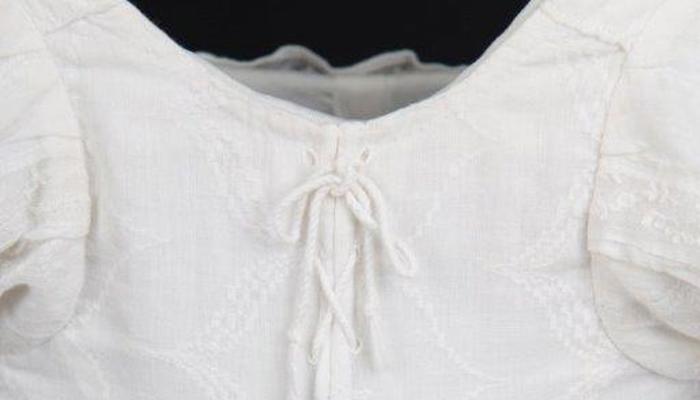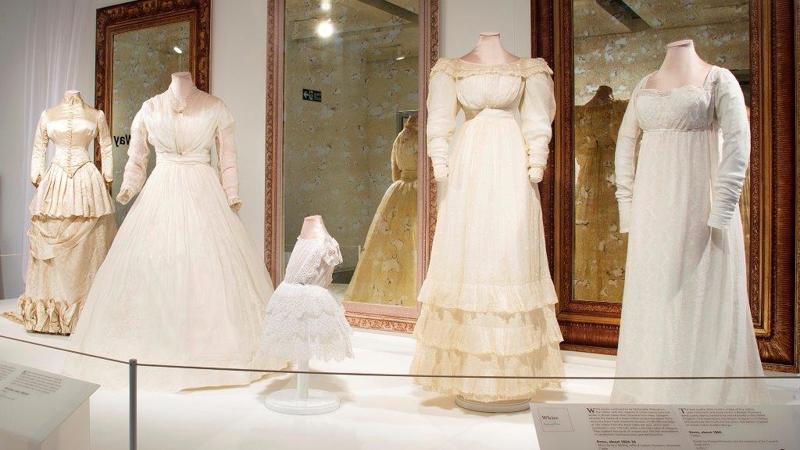
The Black History of White Cotton Dresses

White dresses on display in 'A Century of Style: Costume and Colour 1800-1899'
Kelvingrove Art Gallery and Museum, 2015
Images © CSG CIC Glasgow Museums Collection
5th February 2019
Glasgow Museums has some wonderful cotton dresses dating from the early nineteenth century. Fashion is often displayed in museums in terms of its aesthetics. Admired for its neoclassical elegance, the slim silhouette of the early 1800s is linked to ideals of reforms and new freedoms – whether from the political tyranny of the Ancien Régime after the French Revolution or the incorrectly-perceived physical constraints of late-1700s stays. For many these dresses embody the period depicted in Jane Austen’s novels, made familiar through cosy Sunday evening costume dramas. However, the sophisticated fashions worn by the Miss Emma Woodhouses of society were made possible only through the exploitation of people thousands of miles away.
One of the most popular materials for these gowns was cotton, either a finely woven version known as muslin worn for evening wear or a slightly heavier weight cotton that was printed and used for day dresses. Cotton is a natural yarn made from the soft white fibres that grow in a ball around the seeds of the cotton plant Gossypium, native to the Indian subcontinent and parts of southern America. When cotton became fashionable in the 1770s the best cotton muslins were imported as woven cloth from Bengal, which had been annexed on behalf of Britain by the East India Company in 1765. However, by the late 1700s vast amounts of raw cotton was imported from the southern states of America and the West Indies. Many of these cotton plantations, especially those in the Caribbean, were owned or managed by Scots, with the cotton sewn and harvested by enslaved men, woman and children brought over from Africa as part of the transatlantic slave trade, or their descendants.
Cotton became a large part of the Scottish economy. The raw material was imported via Clyde ports from 1775 with 2,732,725 lbs imported in 1790 rising to 8,421,820 lbs in 1805. Cotton mills, which processed the raw cotton balls, were built creating a new industry. The first mill was built in Penicuik, Midlothian, but the majority were in Glasgow and surrounding counties, including New Lanark, where the damper climate aided production. Threads were spun and cloth woven, with further industries developing that embellished this naturally white fabric by embroidering, dying or printing on it. Some was sold and used here in Scotland, but the majority was exported with the result that cotton took over from wool as the leading British export good in 1803 – a position it held until 1938.
Rebecca Quinton,
Research Manager, Art


